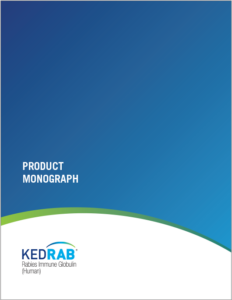KEDRAB MONOGRAPH

Access the KEDRAB Monograph
Discover detailed information about how the rabies virus (RABV) attacks and where it exists in the U.S., current post-exposure prophylaxis (PEP) guidelines, and in-depth clinical data on KEDRAB® (Rabies Immune Globulin [Human]) in both adults and children.
